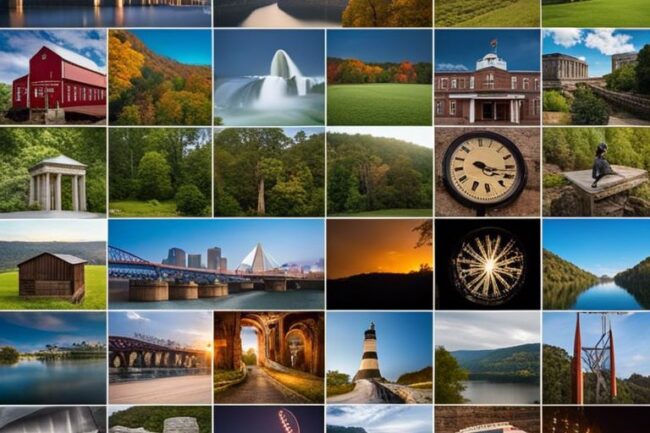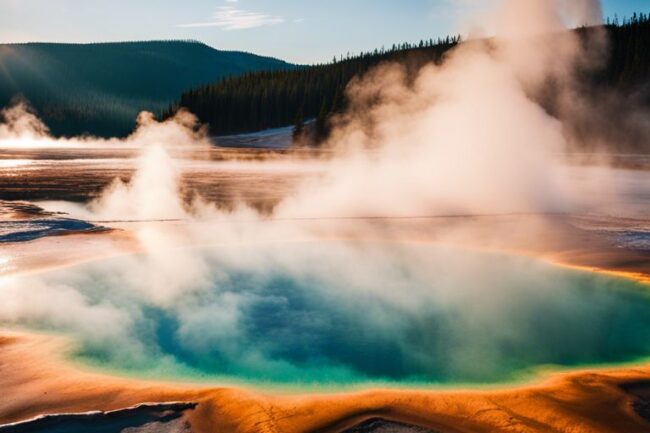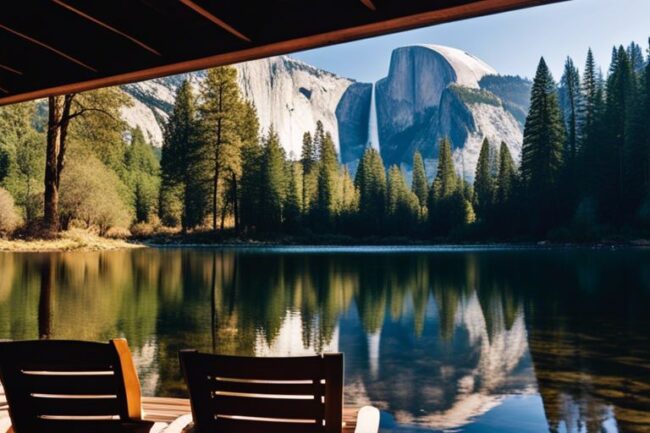Most adventurous travelers know that Tennessee is filled with exciting destinations worth exploring. Whether you’re a nature lover, history buff, or music enthusiast, Tennessee has something for everyone. From the vibrant city of Nashville to the breathtaking Great Smoky Mountains National Park, this list of the 10 Best Places to Visit in Tennessee will help you plan an unforgettable trip! Check out the full list here.
Key Takeaways:
- Great Smoky Mountains National Park: A must-visit for nature lovers with stunning mountain vistas and diverse flora/fauna.
- Memphis: Known for its rich musical history, visit Graceland, Beale Street, and sample mouth-watering BBQ.
- Nashville: The vibrant capital city is a music lover’s paradise with the Country Music Hall of Fame and Grand Ole Opry.
- Gatlinburg: Perfect for outdoor enthusiasts, offering hiking, skiing, and charming mountain town vibes.
- Chattanooga: Explore the quirky side of Tennessee with attractions like Ruby Falls and Rock City atop Lookout Mountain.
Nature Escapes
Great Smoky Mountains National Park
One of the most visited national parks in the United States, the Great Smoky Mountains National Park is a nature lover’s paradise. Home to diverse wildlife and stunning mountain views, this park offers over 800 miles of hiking trails for all skill levels. Don’t miss out on the chance to see the synchronous fireflies in late spring!
Fall Creek Falls State Park
Smoky mountains, cascading waterfalls, and lush forests await you at Fall Creek Falls State Park. With the highest waterfall in the eastern United States, plunging at 256 feet, it’s a sight to behold. Explore the park’s extensive trail system or relax by the picturesque lake for a perfect nature escape.
The Fall Creek Falls State Park in Tennessee is a haven for outdoor enthusiasts. With opportunities for hiking, biking, camping, and even bird watching, there’s something for everyone to enjoy. The park also offers cabins and campsites for those looking to extend their stay and immerse themselves in the beauty of nature.
Reelfoot Lake
On the border of Tennessee and Kentucky lies Reelfoot Lake, a unique spot formed by an earthquake in the early 19th century. Known for its abundant bird species and serene boating opportunities, this shallow lake is a peaceful retreat for nature lovers.
Park rangers at Reelfoot Lake emphasize the importance of respecting the wildlife and natural habitats present in the area. Be cautious of alligators that inhabit the lake and enjoy birdwatching from a safe distance. Explore the scenic surroundings by kayak or canoe for a truly immersive experience with nature.
1. Great Smoky Mountains National Park – Scenic beauty, hiking, wildlife.
2. Nashville – Music capital, Grand Ole Opry, honky-tonks.
3. Memphis – Beale Street, Graceland, BBQ.
4. Ruby Falls – Underground waterfall, Chattanooga.
5. Elvis Presley’s Graceland – Iconic musician’s home, museum.
6. Gatlinburg – Touristy town in Smoky Mountains.
7. Rock City – Gardens, Lookout Mountain views.
8. Dollywood – Theme park, shows, Pigeon Forge.
9. Chattanooga – Aquarium, Lookout Mountain, riverfront.
10. Andrew Jackson’s Hermitage – Historic home, museum, gardens.
Music City Magic
Country Music Hall of Fame and Museum
City – While in Nashville, a visit to the Country Music Hall of Fame and Museum is a must for music lovers. Explore exhibits showcasing the history and legends of country music, including Elvis Presley’s gold Cadillac and artifacts from Dolly Parton and Johnny Cash.
Ryman Auditorium
An – One of the most iconic music venues in the world, Ryman Auditorium is known as the “Mother Church of Country Music.” Attend a live performance or take a tour to experience the legendary stage where artists like Hank Williams and Patsy Cline once graced.
Another
Bluebird Cafe
Country – Discover the intimate setting of the Bluebird Cafe, a renowned venue where songwriters showcase their talents in an acoustic setting. Enjoy live performances by aspiring musicians and seasoned songwriters in this cozy and historic Nashville gem.
Hall

History Buffs Rejoice
The Hermitage: Home of President Andrew Jackson
To all history buffs visiting Tennessee, a trip to The Hermitage, the former home of President Andrew Jackson, is a must. Explore the preserved mansion, grounds, and learn about the life of the controversial seventh president of the United States.
Belle Meade Plantation
Jackson your itinerary with a visit to Belle Meade Plantation, a historic site that offers a glimpse into the antebellum South. The plantation showcases the grandeur of a bygone era and highlights the Southern charm and hospitality.
This popular tourist destination allows visitors to tour the stunning Greek Revival mansion, sample award-winning wines, and learn about the rich history of the Harding and Jackson families who owned the estate.
Tennessee State Museum
With a vast collection of artifacts and exhibits, the Tennessee State Museum is a treasure trove for history enthusiasts. Learn about the state’s rich cultural heritage and significant events that shaped its history.
The museum features diverse exhibits ranging from Civil War artifacts to interactive displays that engage visitors of all ages, making it a perfect educational destination for the whole family.
Urban Delights
Nashville’s 12 South Neighborhood
Keep an eye out for the trendy Nashville neighborhood of 12 South. This vibrant area is filled with charming boutiques, delicious eateries, and quaint coffee shops that will surely make for a perfect day out in Music City.
Memphis’s Beale Street
Any visit to Memphis would not be complete without a stroll down Beale Street. This iconic entertainment district is where you can immerse yourself in the rich history of blues music. Live music venues, southern BBQ joints, and lively bars line the street, creating a buzzing atmosphere that is quintnecessaryly Memphis.
Knoxville’s Market Square
One of the highlights of Knoxville is Market Square. This bustling gathering place is home to a variety of local shops, restaurants, and regular events such as the Farmers’ Market. Be sure to check out the regional produce and artisanal crafts while soaking in the vibrant energy of this popular spot.
Family Fun
Dollywood Theme Park
Not just a theme park, Dollywood in Pigeon Forge is a truly magical experience for the whole family. One of the top attractions in Tennessee, Dollywood offers thrilling rides, live entertainment, delicious food, and even a water park.
Nashville Zoo
The Nashville Zoo is a must-visit for families looking to get up close and personal with wildlife. The zoo is home to over 2,000 animals, including majestic lions, playful monkeys, and adorable river otters. Interactive exhibits and educational programs make it a fun and enriching experience for all ages.
Plus, the Nashville Zoo offers unique experiences like feeding giraffes and camel rides, making it a truly memorable visit for the whole family.
Children’s Museum of Memphis
Childrens of all ages will love the Children’s Museum of Memphis, where learning is disguised as play. The museum features interactive exhibits covering topics like science, art, and culture, providing hours of entertainment and education for kids and parents alike.
Memphis Magic and mystery, art and science, creativity and exploration – the Children’s Museum of Memphis is a place where imaginations run wild and smiles abound. With hands-on activities and special events, this museum is a treasure trove of fun for the whole family.
Scenic Drives and Byways
The Great River Road
Once again, Tennessee proves to be a paradise for road trippers with the Great River Road. This scenic drive follows the path of the mighty Mississippi River, offering stunning views of the water, lush forests, and charming small towns along the way.
The Cumberland Trail
Byways, the Cumberland Trail is a must-visit for nature lovers and hiking enthusiasts. This 330-mile hiking trail runs from Chattanooga to Cumberland Gap, passing through diverse landscapes, including lush forests, cascading waterfalls, and stunning overlooks.
Cumberland Trail is a hiker’s dream come true, with challenging terrain and breathtaking views awaiting at every turn. Make sure to pack plenty of water, snacks, and your camera to capture the beauty of this hidden gem in Tennessee.
The Natchez Trace Parkway
Any road trip through Tennessee would be incomplete without a drive along the Natchez Trace Parkway. This historic route spans 444 miles from Natchez, Mississippi, to Nashville, Tennessee, offering a glimpse into the past with its preserved landmarks and peaceful surroundings.
Great for history buffs and nature enthusiasts alike, the Natchez Trace Parkway features serene forests, birdwatching opportunities, and a chance to explore Native American mounds and historic sites along the way. Don’t miss out on this unique driving experience in Tennessee!
To wrap up
Hence, Tennessee offers a diverse array of attractions that cater to all kinds of travelers. Whether you’re a music lover, nature enthusiast, history buff, or foodie, there’s something for everyone in the Volunteer State. From the music scene of Nashville to the stunning landscapes of the Great Smoky Mountains, Tennessee has plenty to offer. So, pack your bags and prepare for an unforgettable adventure in these top 10 places to visit in Tennessee!
FAQ
Q: What are the top 10 places to visit in Tennessee?
A: The top 10 places to visit in Tennessee are Nashville, Great Smoky Mountains National Park, Memphis, Chattanooga, Gatlinburg, Pigeon Forge, Knoxville, Franklin, Lynchburg, and Clingmans Dome.
Q: Why should I visit Nashville in Tennessee?
A: Nashville is known as the Music City and offers a vibrant music scene, historic sites like the Grand Ole Opry, and delicious Southern cuisine.
Q: What can I see in the Great Smoky Mountains National Park?
A: In the Great Smoky Mountains National Park, you can explore scenic trails, see diverse wildlife, visit Cades Cove, and enjoy breathtaking mountain views.
Q: What attractions does Memphis in Tennessee offer?
A: Memphis is famous for Graceland, Beale Street, Sun Studio, and delicious barbecue, making it a must-visit destination for music and history lovers.
Q: What makes Chattanooga a great place to visit in Tennessee?
A: Chattanooga offers attractions like Lookout Mountain, Ruby Falls, Tennessee Aquarium, and Rock City, as well as outdoor activities and a charming downtown area.
Q: Why visit Gatlinburg and Pigeon Forge in Tennessee?
A: Gatlinburg and Pigeon Forge are perfect for outdoor enthusiasts with attractions like Dollywood, Ober Gatlinburg, Great Smoky Mountains Arts and Crafts Community, and scenic drives.
Q: What is there to do in Knoxville, Tennessee?
A: Knoxville is home to the University of Tennessee, Market Square, Sunsphere, World’s Fair Park, and nearby outdoor adventures in the Smoky Mountains.
Q: Why should I visit Franklin, Lynchburg, and Clingmans Dome in Tennessee?
A: Franklin offers historic sites, Lynchburg is known for Jack Daniel’s Distillery, and Clingmans Dome provides unmatched views as the highest point in the Great Smoky Mountains National Park.









